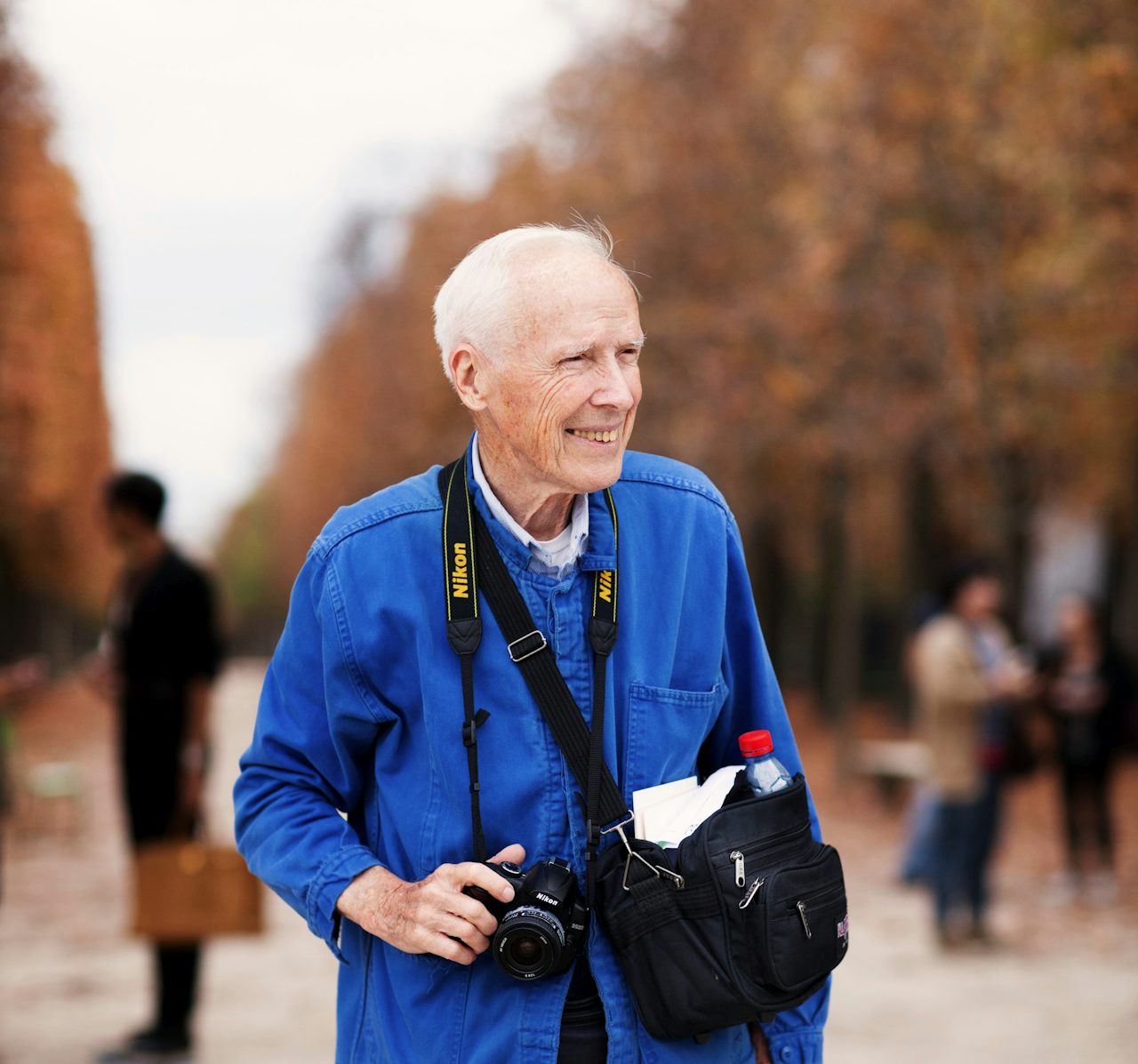In 1963, when he was working as a fashion journalist, the late New York Times fashion photographer Bill Cunningham found himself trapped on a train in the mountains of central Italy. The train, filled with members of the fashion press, was delayed by a blizzard on its way to Florence, where top designers were presenting their newest collections. Not one to be put out by minor inconveniences, Cunningham was fine with the direction this adventure was taking, but watched as the fancier members of the fashion press lost their cool as the train became more and more delayed. You can almost hear Cunningham smiling unforgivingly when, in his newly-released memoir Fashion Climbing, he writes that “all the advice [fashion magazine editors] hand out doesn’t work when you’re outside the comfort of your plush office.”
It’s a sentiment that pops up throughout the book — the difference between the sterile, exclusive world of high fashion and the beauty, ingenuity, and rapture that comes along with fashion that is lived in and has a place in the real world. The title of his book comes from the latter experience, the pursuit of fashion as the pursuit of innovation, individuality, beauty. As you learn quickly in the book, Cunningham has little patience for the opposite, social climbers, or people whose pursuit of beautiful fashions is solely with social advancement in mind. More than just being phony, Cunningham, through his own experience, reveals these phonies as curses to imaginative designers everywhere. He offers his own story as evidence that designers need not sacrifice their voice or ambition to please the masses. After going to one particularly inspired show, he remarks: “I have seen the proof of creative design, and it’s worth every drop of hardship to climb to the top.”
Those familiar with Cunningham and his work will be unsurprised by the reverence with which he writes about fashion. Nor will they be surprised by the disdain he reserves for all things pretentious and passionless, a byproduct of his Boston working-class roots. Before his death in 2016, Cunningham had evolved from fashion insider to pop culture celebrity, known for his eye for taste and style as exhibited by the many fashionable New York City women he photographed on the street for The New York Times. The 2011 documentary Bill Cunningham New York brought his personality and world philosophy to a wider audience, taking viewers inside his apartment, but Cunningham still maintained a distance between himself and the public. Cunningham worked on the manuscript for Fashion Climbing in secret; the text wasn’t even discovered until after his death. In the book, he writes about how, while working as a milliner under the name William J., Cunningham created all his collections in secret and isolation to avoid getting unwanted, outside influence. He no doubt brought that same process to his memoir, and the result is a loving, and sometimes scolding, missive to the cosmopolitan fashion world he dedicated his life to.
Writing with an almost-frantic excitement, Cunningham begins the book with his childhood in Boston, during which he was bullied and beaten for his love of women’s clothes and the homophobia of those around him. (Cunningham never talks about his sexuality or romantic relationships in the book.) He then moves through his time working in clothing stores, visiting Paris while in the Army during the Korean War, working as a designer of women’s hats, as a reporter for Women’s Wear Daily, and a freelancer. By the time he ends his book sometime in the ‘60s, we are still a long way from the Cunningham we all came to know and love from his work in his “On the Street” column, and yet the reader still gets a dose of wisdom and perspective that a deluge of memoirs recently published by young people can only aspire to. The man with the careful, loving eye for style is there for sure, but so is the prideful, peacock that he kept from the public eye in his later years.
There, too, is a good measure of a man with strong, unwavering opinions on the world, but not only in the realm of fashion. His disdain for social climbing is one, as his hatred of the insidious anti-Semitism he saw running through the industry at the time. He hates the press’s detachment from the lives of everyday people, and pities any designer who sacrifices personal vision to their whims. He loves the fearless style of women in Chicago, hates the unadventurous style of socialites in the Hamptons, takes the utmost pleasure in sneaking into fancy parties to which he hasn’t been invited, and thinks best-dressed lists are “the most outrageous lie of our times.” In his own words, we get a Cunningham that has the same beautiful complexity with which he regarded his subjects on the street. And while his judgements, particularly on how women should and should not dress, come off as charmingly crotchety at times and judgemental at others, he makes his guiding principle clear: “I think it’s about time women stopped all this ridiculous nonsense and wore their clothes for the sheer pleasure that they receive from something beautiful.
Above all, Fashion Climbing is a celebration of pleasure without the veil of exclusivity that the more pretentious sides of fashion feed on. Cunningham celebrates the feel and weight of a beautiful fabric, the smell of fresh flowers in a shabby apartment on a Monday, the visceral release of a wild costume party with friends, the sight of someone completely at ease and glowing in the outfit they chose for themselves that day. As a memoir, Fashion Climbing offers insight on a man so many wanted to know and know more about. But in turning his attention on himself, Cunningham gives us another gift entirely, a guide on how to live a long life loving what you do.



